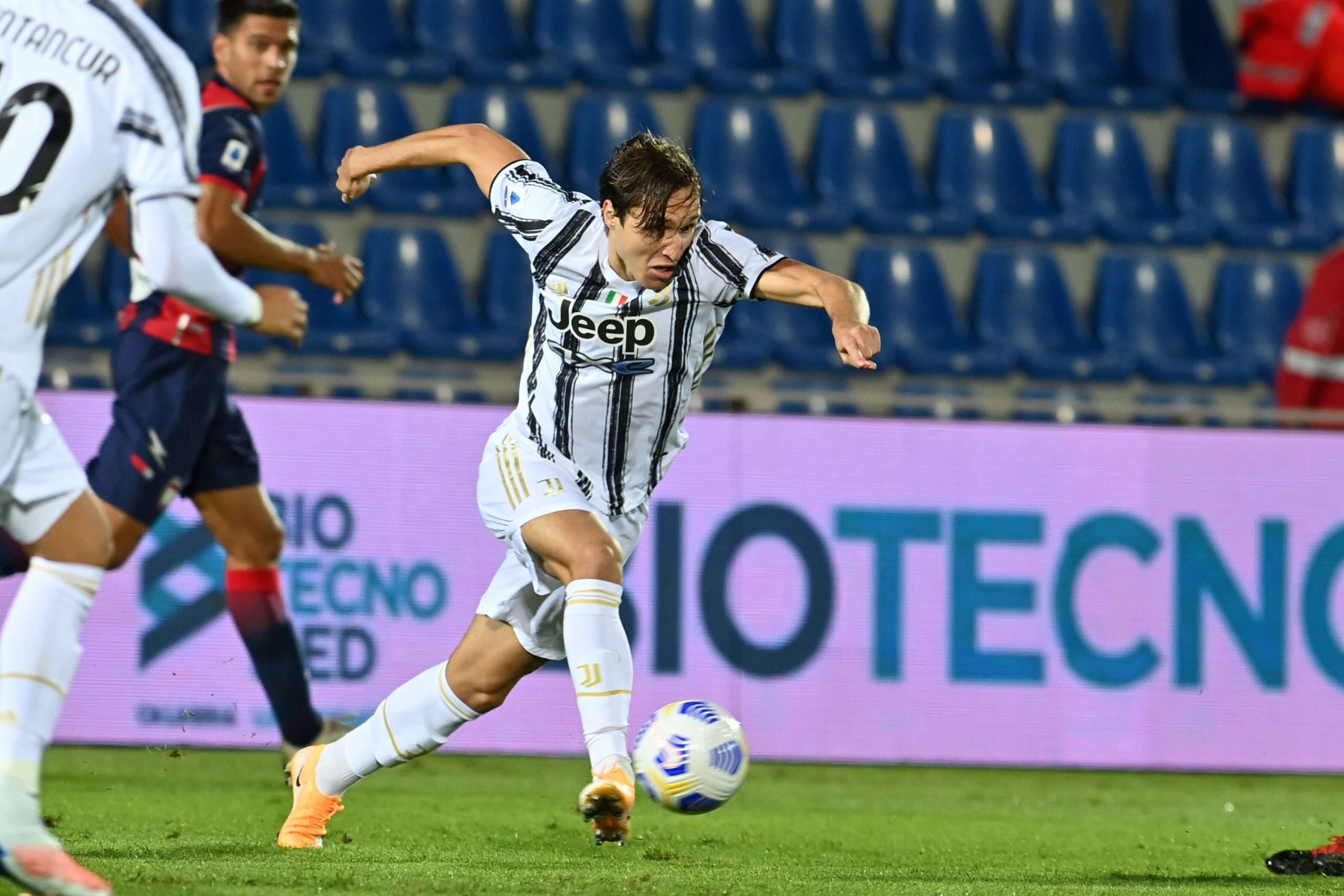The inevitable transfer took place in the last few days of the summer transfer window. It could’ve easily happened last summer, but Juventus finally found the finances and the space in the team to bring Federico Chiesa in from Fiorentina. It was a long time coming, and personal terms were reportedly agreed as far back as 14 months ago – it was merely a case of Juve paying up.
While the move was certainly expected, the fee and the structure of the move was pretty surprising for many. La Viola would loan him out for two years, and would earn a loan fee of €10 million over this period. Once the loan spells end, Juventus would have the option to buy the player permanently for €40m. Having said that, this clause would be triggered should Chiesa make a certain number of appearances, score ten times or assist as many times, too.
Fiorentina aren’t getting all of the €50 million that they wanted in one go, and while that might be disappointing for the Viola faithful and owner Rocco Commisso, the club has already replaced Chiesa in some ways. Gerard Deulofeu was seen as a target, and so was Jose Callejón. Udinese used their ties with Watford to sign Deulofeu, and La Viola signed Callejón for free – months after the Spaniard seemed largely set for a move to Villarreal to reunite with former Napoli teammate Raul Albiol.
Juve, on the other hand, had to move Douglas Costa out to bring Chiesa in, as the Brazilian sealed a loan move back to Bayern Munich. With Federico Bernardeschi currently low down in the pecking order, Chiesa has already made an impact at the Bianconeri and he seems set to become a regular part of Andrea Pirlo’s side, which will only evolve in terms of their tactical approach and system.
Chiesa’s use as a wing-back
Towards the end of his time at La Viola, Beppe Iachini had begun to use Chiesa as a right wing-back. The experiment started off last season and drew criticism from many. It happened a couple of times last season and in some ways, it was working too. Against Lecce, Chiesa played as a wing-back and scored once and assisted once in a 3-1 win for Iachini’s men.
This season at Fiorentina, Chiesa started as a wing-back – contrary to how he had started the 2019/20 season, as a second striker beside Franck Ribéry under Vincenzo Montella. Iachini, largely owing to a want for dynamism on the right side and the availability of winter signing Christian Kouamé, was increasingly willing to use Chiesa as the wing-back. He began the campaign in his 3-5-2 shape with Kouamé and Ribéry up front against Marco Giampaolo’s Torino, with Chiesa constantly pushing forward from right wing-back and taking up the positions of a traditional right-winger.
The Italian grabbed a vital assist for Gaetano Castrovilli’s goal, and impressed quite a bit in the same position against Inter as well. He scored a goal off a tremendous Ribery assist and even made three vital defensive contributions, putting to bed any criticism about Iachini’s usage of him as a wing-back.
At Juve, Andrea Pirlo has helped Chiesa to carry forward that progress in the wing-back role, and it seems to be working well so far. Pirlo’s system oozes dynamism, even though it is still suspect defensively, and fell apart against Roma. The wide centre-backs often push forward in position to play as full-backs and the central centre-back almost acts like a sweeper. The wing-backs push forward to play like wingers in possession and constantly get service from the wide central defenders. It isn’t as structured or pragmatic as Iachini likes at Fiorentina, and brings the best out of players that are tactically adept, intelligent and dynamic.
In a system like that, Chiesa has fit in like a glove under Pirlo in the wing-back roles. The constant change from a back three to a back four allows the Italian freedom to bomb forward and use his acceleration in large spaces. Juventus are a team that needed a revolution, which they had needed under Maurizio Sarri himself. It never quite happened, with the players used to playing a more structured approach under Massimiliano Allegri.
That transition has happened under Pirlo, who demands players that are positionally versatile and thus contribute to a system which is flexible and interchangeable. Before Chiesa’s arrival, the Old Lady only had a single versatile wide player in Juan Cuadrado. Pirlo did use young Gianluca Frabotta on the left and Dejan Kulusevski on the right, but the Swede is far from being a wing-back and is more of a right sided forward. In that sense, Chiesa adds a trait that they really need to get Pirlo’s system to work – he is versatile down the flanks.
He was sent off against Crotone, but he notched up a vital assist as well. Chiesa came up with three shot-creation actions in the game – the second-highest in the game. He played as a traditional left-winger in a 4-4-2 shape in the Champions League against Dynamo Kyiv, and did his job quite well too. He created the highest number of chances in the game – three – and had the second highest distance of progressive ball carries as well, doing pretty much the sort of job that he is expected to do at Juve.
A lot of Chiesa’s development has been hindered by being played in too many different positions in a short space of time under different managers, systems and formations. This never helps a young player develop a solid final pass or develop decisiveness in his approach to the game – something which became a main criticism against Chiesa.
It became a main cause for annoyance at Fiorentina, even though he delivered at many vital moments. Because of how he often stood up in big games and contributed during important phases, it would be wrong to say that La Viola won’t miss him. Despite that, the Gigliati have replaced Chiesa with more of a natural wing-back in Callejón.
Callejón’s role in a new-look Fiorentina
Iachini’s men now seem to have a spine of highly experienced professionals and a team full of undervalued upstarts that are destined to make it big soon. Callejón joins a club that has the perfect setup for himself, considering the sort of player he ended up becoming towards the last two seasons at Napoli.
Initially a natural winger under Maurizio Sarri and Rafael Benítez, Callejón became one of Carlo Ancelotti’s most faithful men because of how much he liked to change from a back three to a back four at the Partenopei. Especially in European games, Napoli relied on this flexibility under Ancelotti and this pragmatism moulded Callejón into a player who offered high workrate, the ability to cover loads of ground off the ball, and some goals here and there too.
Even under Rino Gattuso last season, Callejón offered the sort of workrate and dimension that a natural right winger like Matteo Politano doesn’t offer. With age and time, he’s become a player who thrives on playing a lot deeper and Fiorentina’s 3-5-2 shape would tap into those strengths that Gattuso and Ancelotti valued.
Pol Lirola is more a natural right-back and isn’t a prolific goal contributor like his compatriot can be. Callejón offers the promise of more goals and more assists and perhaps a higher workrate. He isn’t a long-term option and Lirola is younger, but Deulofeu wasn’t going to be a like-for-like replacement for Chiesa as he thrives on being in the final third with the ball. It does present a bit of a dilemma, but Callejón is more a suitable player in the current system than Deulofeu or Lirola.
Although the structure of the fee for Chiesa does raise some eyebrows, in the long-term, it could end up benefiting both the parties and the clause involving his appearances and goals/assists might just turn out to be a formality.










